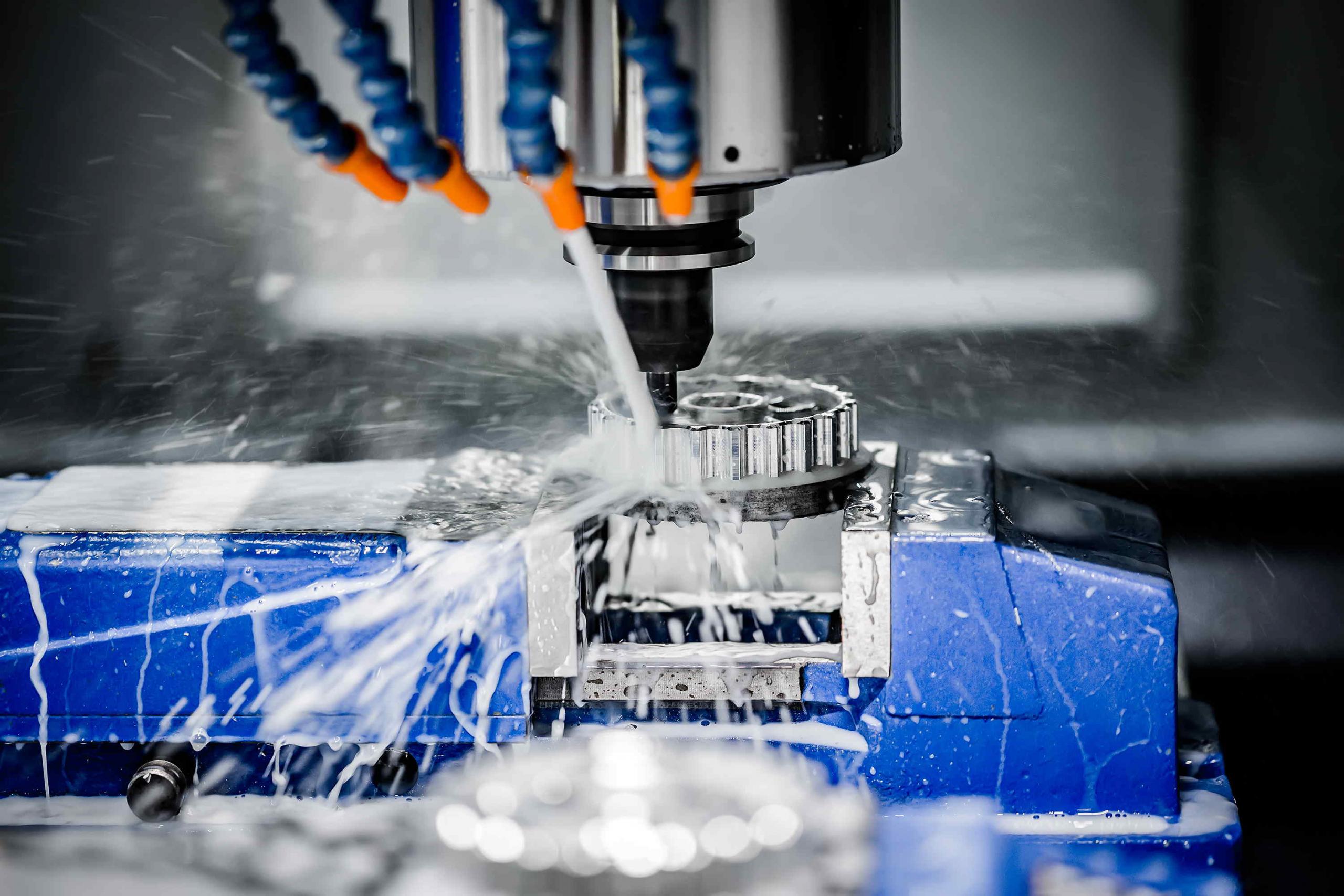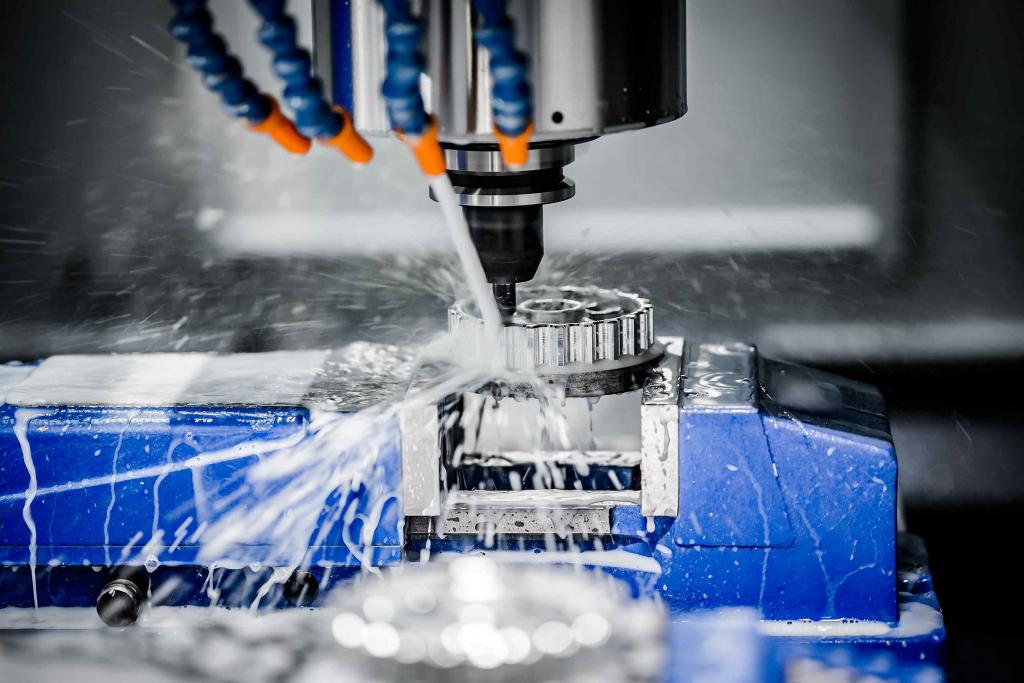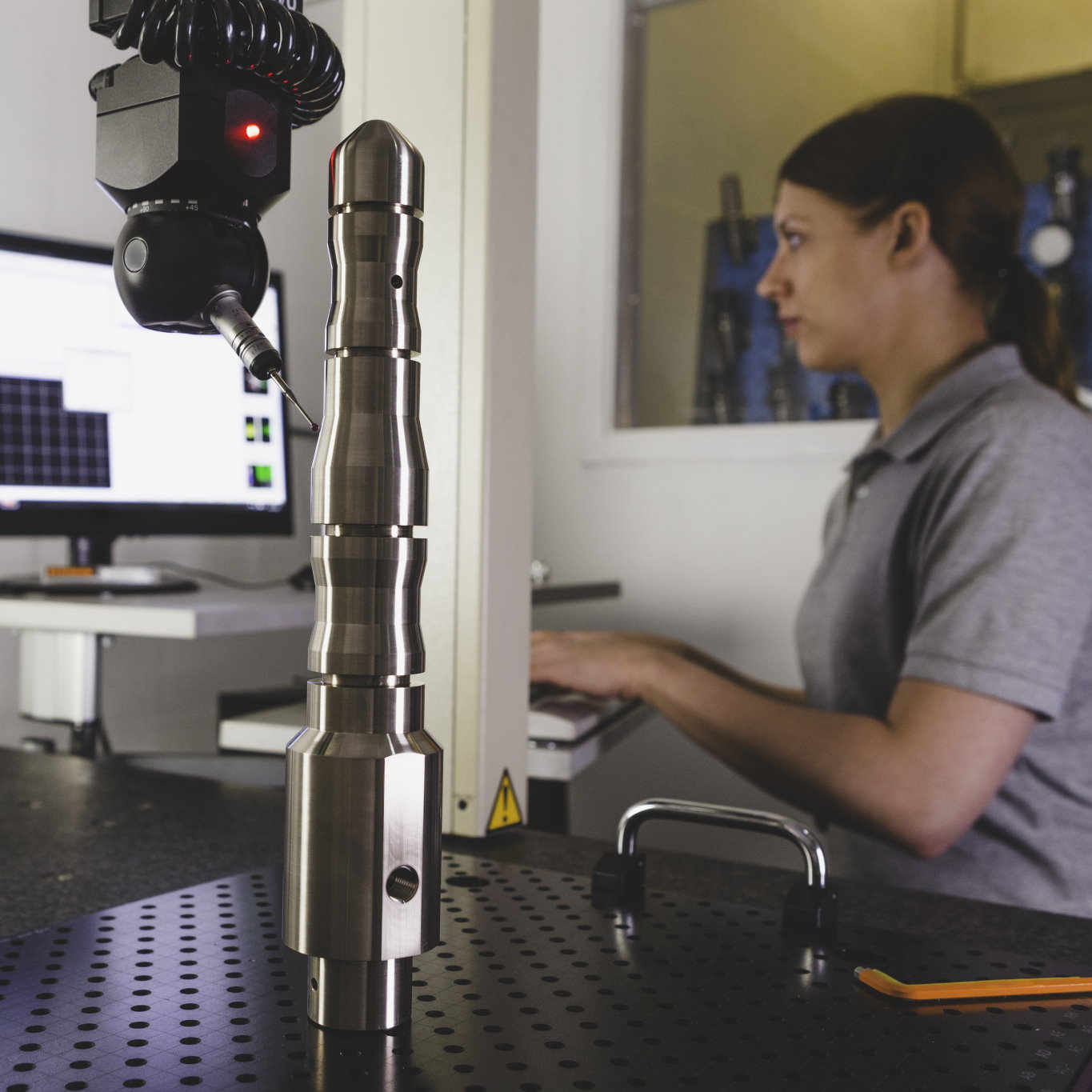


Manufacturing the Best
Our Services Include
Machining
PBTT's machining capabilities combine exceptional chip-to-chip...
PBTT’s machining capabilities combine exceptional chip-to-chip speed, multi-axis machining functionality, and automated loading and inspection to deliver unparalleled pricing and repeatability in machining metals and plastics. Depending on the projects requirements, machining centers can be outfitted with up to a 120 tool magazine, dual or quad bay pallet changers, and Renishaw probing to accomplish fully automated machining. Unlike most machining vendors, PBTT is able to process a range of proprietary alloys and plastics, including magnesium alloys.
Deburring
Deburring is a technique that removes a rough edge or ridge left...
Deburring is a technique that removes a rough edge or ridge left on a component from a tool or machine. Deburring can decrease resistance to fractures by reducing stress on concentrated, sharp, edges, decrease material failures due to cracking, decrease risk of corrosion due to varying material thickness, and prevent unsafe handling. PBTT offers manual, electrochemical, and mechanical demurring. Manual deburring, the most common method practiced, is used to remove large burrs difficult to remove through mechanical or electrochemical automated processes. Mechanical demurring can remove small to medium burrs either through mass finishing or machining operations. Electrochemical is used to remove small burrs in hard to reach areas.
Tumbling
Tumbling is a technique for smoothing and polishing rough surfaces...
Tumbling is a technique for smoothing and polishing rough surfaces on relatively small parts. The process typically complements molding, casting, and machining processes to remove unwanted burrs and tool marks. Varying the parameters of the tumbling process and media used dictate the surface finish achieved in the mass finishing operation. PBTT offers an array of tumbling media, including ceramic, glass, and corn cob. PBTT offers either manual or automated loading, dependent on the component size, shape, and production volumes, to drive efficiencies and reduce cost.
Polishing
Polishing is a technique of removing minimal material to create a smooth...
Polishing is a technique of removing minimal material to create a smooth, shiny, appearance. PBTT offers various types of mechanical and electromechanical techniques to polish a components surface. Mechanical polishing can be accomplished manually or with automated, mass finishing, equipment. Manual polishing is accomplished using various abrasive polishing wheels and media. Automated, mass, finishing is accomplished through PBTT’s proprietary equipment utilizing centrifugal force to generate large amounts of energy to super-polish surfaces without expensive labor and inconsistent finishing. Electropolishing is an electrolytic process to moderately reduce surface roughness prior to additional finishing.
Blasting
Media blasting directs various types of abrasive media to at the surface...
Media blasting directs various types of abrasive media to at the surface of a component to alter the material’s appearance. PBTT offers metal and plastic substrate media blasting to roughen or smooth a component's surface. The distance from the work piece, angle of media impact, pressure, duration, and media used in the process dictate the surface finish achieved in the process. Media used in the process can include aluminum oxide, glass bead, silicon carbide, plastic abrasive, steel shot, steel grit, corn cob, and walnut shell.
Anodizing
Anodizing is an electrolytic passivation process that increases the thickness...
Anodizing is an electrolytic passivation process that increases the thickness of materials naturally occurring oxide layer while submerged in an electrolyte. PBTT has developed a proprietary, disruptive, anodizing process, called ALADIZE, that can convert the surface of a magnesium alloy into an oxide layer. The oxide layer developed can take the form of magnesium oxide (type I), aluminum oxide (type II), or a ceramic (type III) depending on the technique used. Post processing, the type II Aladize aluminum oxide layer can be dyed to achieve a decorative surface.
Conversion Coating
Conversion coatings passivate a material to create a protective...
Conversion coatings passivate a material to create a protective, decorative, layer on the surface of a component. Phosphate and chromate conversion coatings are among the most popular conversion coatings practiced and can typically deliver a cost effective surface with increased chemical resistivity. Additionally, the converted surface can act as a primer to increase paint adhesion.
Plating
PBTT offers electroless and electrolytic plating processes on various metals...
PBTT offers electroless and electrolytic plating processes on various metals and plastic substrates. Electroless plating is an auto-catalytic, non-galvanic, plating process that involves several simultaneous chemical reactions to deposit an even metallic coating onto the surface of a component regardless of the components shape or dimensions. Electrolytic plating employs an external current to donate electrons to a plating bath causing the reduction and deposit of metal ions onto the surface of a component. Both metal and plastic substrates can be processed through PBTT’s automated and semi-automated plating equipment with ease.
Extruding
Magnesium and MAGNITE extruding uses cylindrical material heated...
Magnesium and MAGNITE extruding uses cylindrical material heated to a malleable state and extruded through a profile to create a net shape 2 dimensional profiled component that is post air cooled and heat treated. Due to magnesium's low temperature extrusion parameters and high strength to weigh ratio, extrusions can achieve design and dimension stability with tighter tolerances than standard aluminum extrusions. The reduction in wear achieved by lower temperature processing results in increased tooling life with lower maintenance expenses.
Die Casting
Magnesium and MAGNITE hot chamber die casting submerges metal...
Magnesium and MAGNITE hot chamber die casting submerges metal injection components into a reservoir of molten magnesium while a hydraulically-powered piston forces the liquid magnesium into a net shape die cavity. Due to the excellent inherent flow capabilities of magnesium cast alloys, dies can be designed to achieve complex shapes and tighter tolerances than aluminum die casting. In addition, magnesium die casting is conducted at a lower chamber than aluminum die casting resulting in longer tooling life and lower maintenance expenses.
Metal Injection Molding
Magnesium and MAGNITE Thixomolding high speed injects...
Magnesium and MAGNITE Thixomolding high speed injects semi-solid magnesium alloys into complex die designs to achieve net shape components with minimal post processing. In contrast with hot chamber, fully liquid, die casting aluminum, magnesium Thixomolding is conducted at a substantially lower temperature to inject semi-solid material into the die cavity. The use of semi-solid material offers inherent advantages, including a reduction in porosity, higher process yield, higher component dimensional consistency, increased die life, and lower tooling maintenance expense.
Cast Forging
Cast Forging is a proprietary process developed by PBTT to simultaneously...
Cast Forging is a proprietary process developed by PBTT to simultaneously improve density and increase strength within a cast or metal injection molded component. As-cast or as-molded components are loaded into a chamber where a cyclic temperature and pressure profile causes the diffusion of trapped gas porosity, fusion of shrinkage porosity, and refinement of the materials grain structure. Post cast forging, components are rapid gas, water, or ambient quenched to meet the final material properties.
